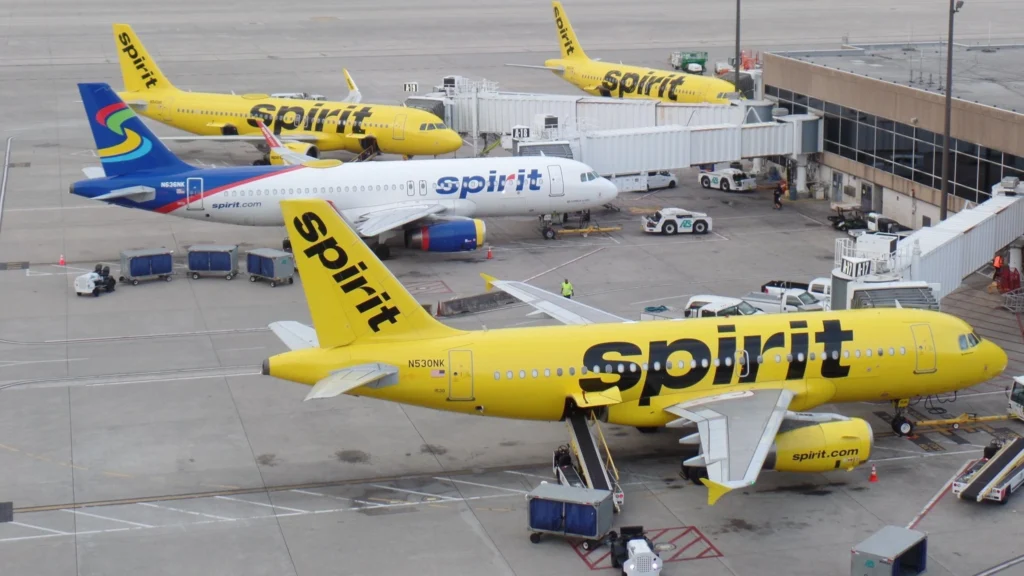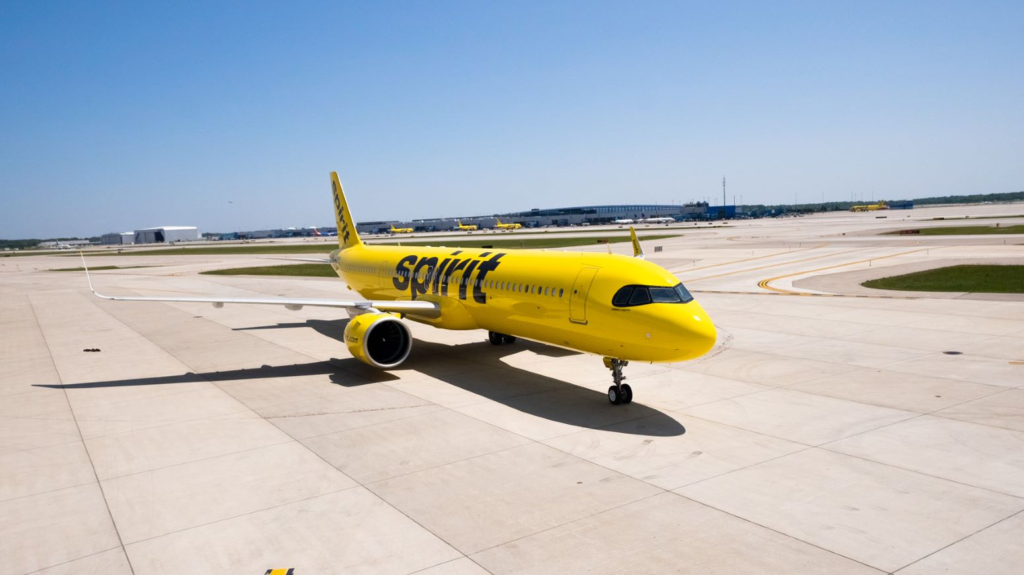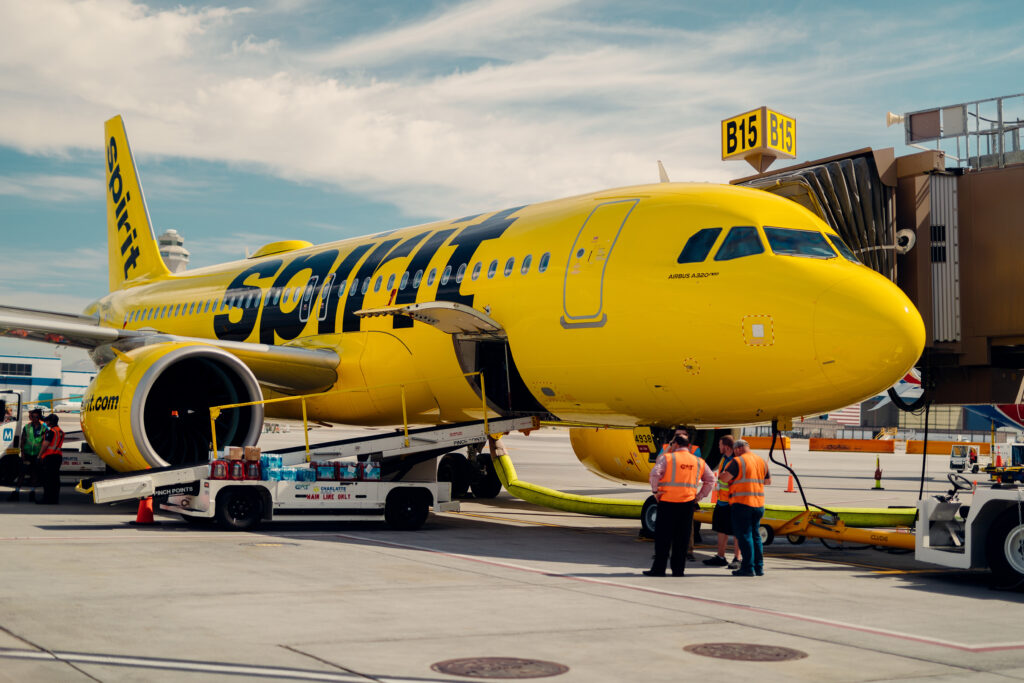
FLORIDA- Spirit Airlines (NK) has grounded 5 aircraft after a corrosive fire suppression foam system unexpectedly activated inside its maintenance hangar at Detroit Metropolitan Wayne County Airport (DTW) on July 4, 2025. The incident may have caused millions of dollars in potential damage.
Initial investigations suggest that a lightning strike during a severe storm may have triggered the system. The foam affected two aircraft inside the hangar and three more parked on the adjacent ramp area.
 Photo: Judah Davis | Shared on X
Photo: Judah Davis | Shared on XSpirit Airlines Grounds 5 Planes
The 126,000 square-foot Spirit Airlines (NK) maintenance hangar at Detroit Metropolitan Airport (DTW), built in 2017 for $32 million, houses a standard foam fire suppression system designed to prevent catastrophic hangar fires.
However, these systems, while effective in fire emergencies, are notoriously corrosive to aircraft components such as wiring and avionics.
At approximately 5 PM on July 4, the system was inadvertently activated during a thunderstorm. Although there was no fire, the foam filled the hangar and spread beyond its open doors, reaching the ramp where additional Spirit aircraft were parked.
The affected aircraft included an Airbus A321 and an Airbus A320 inside the hangar, with three more Spirit aircraft outside.
Unfortunate foam incident in Spirit Airlines’ Aircraft maintenance hangar at Detroit Metro Airport where the fire suppression system got triggered accidentally, releasing a massive foam discharge.
The open hangar doors allowed the foam to spill onto the ramp area.
The incident… pic.twitter.com/0A1iBwC6Av
— FL360aero (@fl360aero) July 6, 2025
All five planes were removed from service and will undergo detailed inspections and cleaning to assess foam exposure.
The early estimates suggest the damage could run into the millions, depending on the extent of corrosion and contamination.
 Photo: Spirit Airlines
Photo: Spirit AirlinesOperational Implications
Despite the potential severity of the incident, Spirit Airlines has confirmed that no injuries occurred and that its flight operations remain unaffected.
A cleanup contractor has been engaged, and first responders assisted with immediate containment. Still, even limited exposure to this type of foam can cost approximately $100,000 per aircraft to clean, with severe cases reaching upwards of $10 million in damage.
The corrosive nature of fire suppression foam necessitates action within 24 hours to mitigate long-term harm.
Sensitive electronics, cabin interiors, and engine components are especially vulnerable, often requiring replacement if exposed.
 Photo: Spirit Airlines
Photo: Spirit AirlinesSimilar Incidents
This is not an isolated event. In 2020, two American Airlines (AA) Boeing 787s at Dallas/Fort Worth International Airport (DFW) were smothered in foam, prompting prolonged inspections during the pandemic slowdown.
In 2014, Lufthansa’s (LH) Airbus A340 suffered $5 million in damage from a similar activation at Frankfurt (FRA). In 2021, Southwest Airlines faced a significant repair bill after a foam incident at Phoenix Sky Harbor (PHX).
These recurring incidents highlight a critical issue in aviation safety infrastructure while effective at controlling fires, foam systems carry substantial risks when inadvertently deployed.
Stay tuned with us. Further, follow us on social media for the latest updates.
Join us on Telegram Group for the Latest Aviation Updates. Subsequently, follow us on Google News
Spirit Airlines Can Cancel Airbus A320neo Orders Amid US Tariffs
The post Spirit Airlines Grounds 5 Aircraft Amid Detroit Hangar Foam Incident appeared first on Aviation A2Z.
